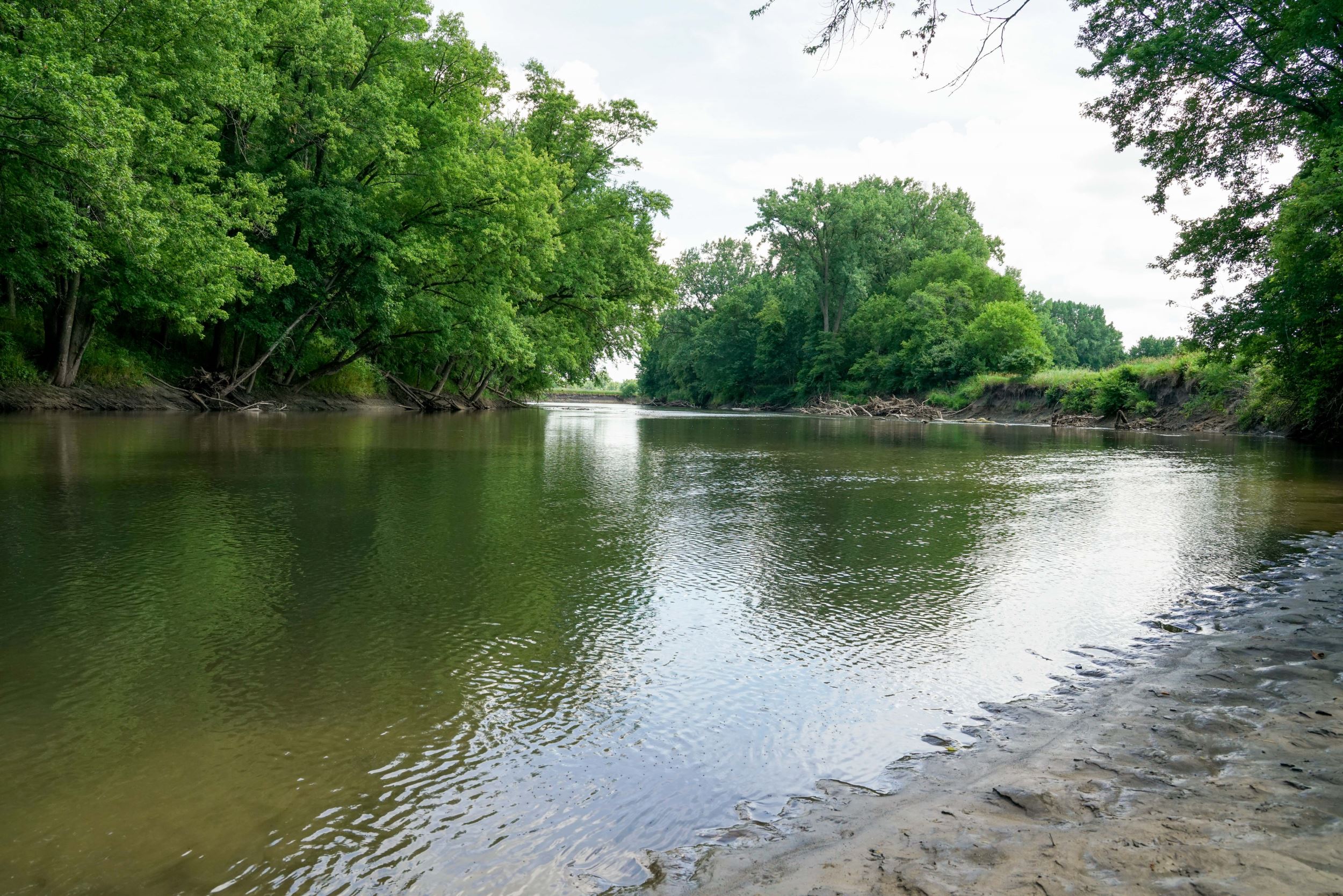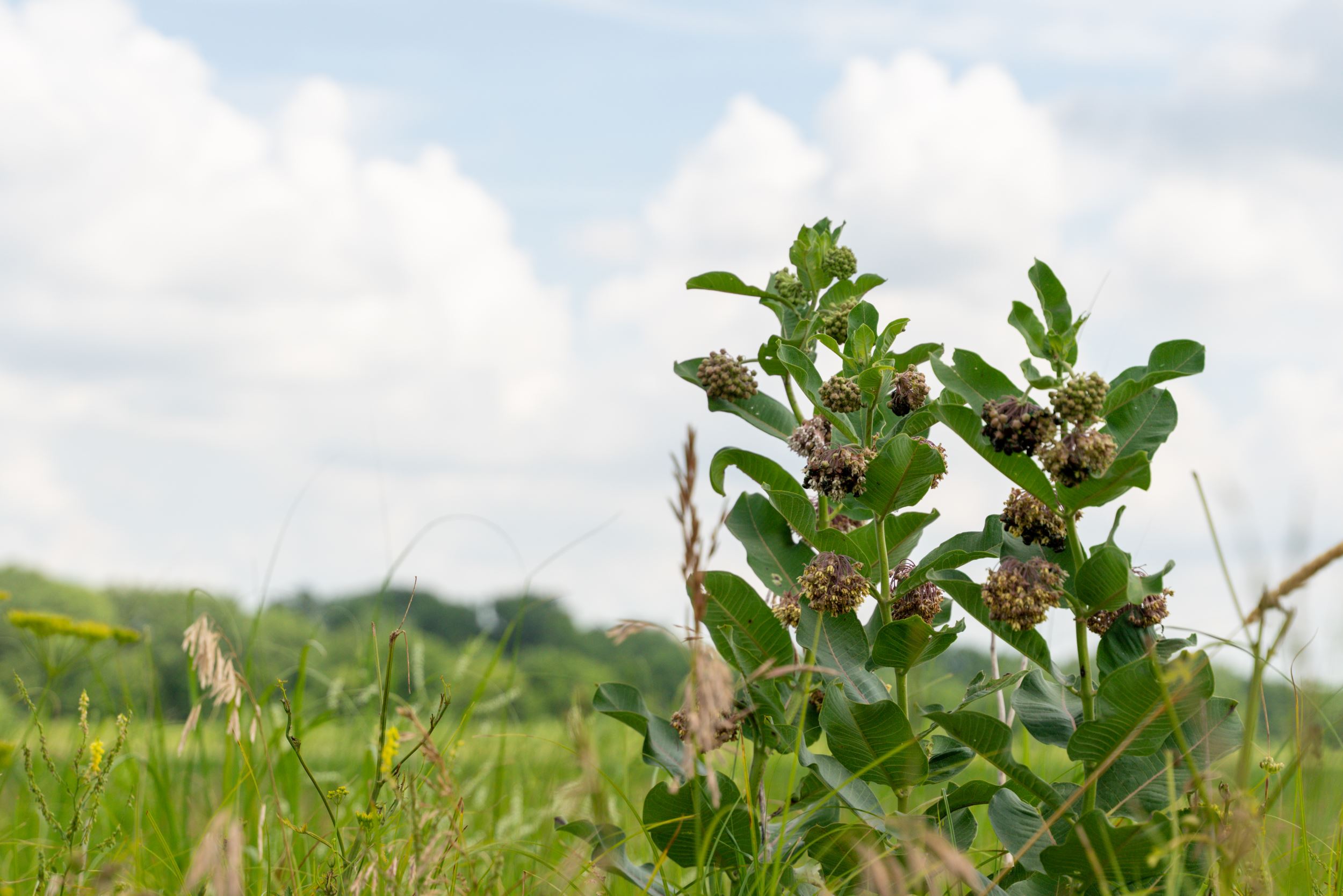A Delicate Balance
By Abby Hade Terpstra on July 30, 2020 in Blog
Those who have paddled the South Skunk River know that the river’s nature can vary widely. There are sections of straight, channelized waters. And then there are sections where the river has been permitted to stray across the landscape, drifting over time into languid loops and bends.

For many years, Dr. Harold Albers observed the interplay of the river with agricultural lands. His property in Story County, purchased after the floods of 1993, became a study of this interplay.
“Dr. Albers was fascinated by the balance of farming and ecology,” said Guy Van Middlesworth, Dr. Albers’ accountant, friend and frequent traveling companion on odysseys from St. Petersburg, Fla. back to Iowa, where he grew up. “He felt he had a responsibility to farm, but to farm responsibly.”
Dr. Albers was born in Eagle Grove, Iowa, in 1926. A graduate of Iowa State University, he served in the U.S. Navy during World War II and continued traveling and photographing the world until he passed away in 2017. He practiced veterinary medicine for over 50 years and was an avid birder, serving as the expedition vet for renowned naturalist, illustrator and educator Roger Tory Peterson. Dr. Albers was also involved with the International Crane Foundation, traveling to the nesting grounds of every species of crane in the world. In 1971, Dr. Albers moved to St. Petersburg, Fla.
“Even though he spent most of his life in Florida, Dad always felt a strong connection to his land in Iowa and enjoyed visiting twice a year,” said Liz Rutemeyer, Dr. Albers’ daughter.
A self-professed “disciple of Aldo Leopold” with a vast interest in conservation, he reached out to and sought to learn from local professionals. In a letter responding to Dr. Albers dated September 2001, former Story County Conservation Board Director Steve Lekwa shared, “You may be aware that the river through your farm land is actually what is left of a ditch dredged by the US Army Corps of Engineers in the early 1900’s in an attempt to improve drainage and make the flood plain easier to farm… The bridge and dead-end road were installed in 1916 to serve the needs of farmers cut off from their land by that channelization. The bridge was first installed near Cambridge in 1876, but later moved to that location.”
Dr. Albers began experimenting with different types of erosion control along the riverbank, concerned about protecting what he called “Elizabeth’s Bridge” in honor of his daughter, and wanting to prevent soil loss from the nearby fields. In 2005, in a letter to then Iowa Natural Heritage Foundation (INHF) President Mark Ackelson, he shared that a recent project “included prairie grass restoration, river banks sloped and wings installed… Fish are now present behind the wings. The river and area has been messed with for more than 100 years, but hopefully will return to a somewhat acceptable state for our use.”

In his annual Christmas letter in 2010, Dr. Albers wrote, “The Ames farm was flooded at the highest known level in August… As a result of water coming out of the city and flat lands above us, we are planting all of the lower grounds in prairie grass in conjunction with the CRP government program.”
This original CRP (Conservation Reserve Program) planting became part of the land along the river that Dr. Albers left to INHF when he passed away in 2017.
“I remember him talking about the beautiful wildflowers and how important nature is,” said INHF President Joe McGovern, who assisted with the planting. “He was so passionate about doing the right thing.”
“He greatly enjoyed observing the fruits of his conservation efforts,” said his son,
Bryan Albers.
Albers’ will asks INHF to “hold [the] land for the specific purpose of wildlife habitat restoration and protection” for a period of 30 years.
“Dr. Albers’ philosophy and passion aligned with the goals of INHF. He trusted the efforts of an organization that he knew was doing the right thing,” Van Middlesworth said.
The property’s proximity to other protected conservation lands gives a sense of puzzle pieces being locked into place. The north boundary of Dr. Albers’ land adjoins what recently became the Ronald “Dick” Jordan Family Wildlife Area, 175 acres of public land along the South Skunk River that INHF transferred to the Story County Conservation Board in 2017.
“This land is part of a greenbelt corridor that extends from Ames all the way to Chichaqua Bottoms and beyond,” said INHF Land Projects Director Ross Baxter. “Imagine what protection of this property and others like it would do for wildlife habitat, water quality and recreation.”
The land Dr. Albers entrusted to INHF’s care, along with his wish that it continue to offer insights into the interplay of conservation and agriculture, speaks volumes about the legacy he leaves; as a contributor to his community, a lifelong learner, a traveler and a naturalist who took great pride in his home state.